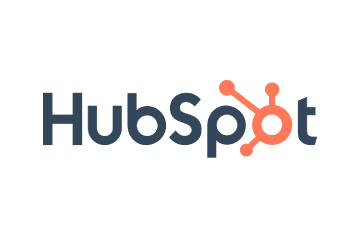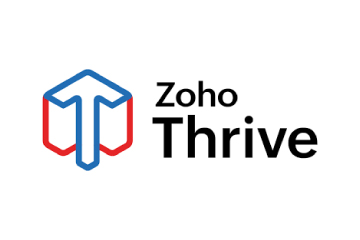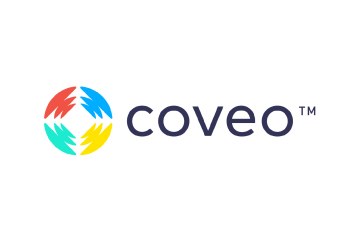Joseph Michelli, clinical psychologist turned customer retention guru, unlocks the secrets of iconic brands like Starbucks and The Ritz.
Ever wondered why Starbucks baristas greet you by name while other shops struggle to remember your usual order? Or how The Ritz transforms a hotel stay into a personal odyssey? The secret lies not in fancy apps or loyalty programmes but in understanding the human heart. Enter Joseph Michelli, a man who swapped his therapist’s couch for the customer journey, wielding insights from clinical psychology to unlock the mysteries of brand loyalty.
Michelli’s journey is anything but ordinary. From navigating healthcare systems to tossing fish at Pike Place Market (yes, you read that right!), he’s collected wisdom like a globetrotting connoisseur. His experiences birthed iconic books like The Starbucks Experience, transforming him into a trusted advisor to giants like Zappos and Ritz-Carlton.
But Michelli isn’t just a brand whisperer. He’s a decoder ring for the evolving language of customer behaviour. In an age where generations Z and X tap, swipe and expect hyper-personalisation, he shows us how to bridge the gap between automation and the human touch. This conversation isn’t just about fancy latte art or crisp linens; it’s about cracking the customer code and building brands that leave footprints on hearts, not just receipts in pockets.
So, buckle up, grab your metaphorical latte (or, you know, water if that’s your jam), and prepare to dive into the mind of a man who turned his passion for healing into a recipe for brand devotion. This conversation will redefine customer experience, one insightful sip at a time.
Excerpts from the interview;
Tell us about your journey from clinical psychology to customer retention.
I had the good fortune of studying clinical psychology in a systems context, which allowed me to gain insight into how family and organisational systems function. After completing graduate school, I began my career as a clinical psychologist. During this time, I gradually advanced within the healthcare system and became involved in organisational development, assisting multiple hospital systems in collaborating for a more seamless patient experience.
This experience sparked my keen interest in enhancing patient service, as it was referred to at the time. I delved into standardisation techniques such as templates and similar approaches. Eventually, I transitioned out of healthcare due to other enticing opportunities. One notable experience was my involvement with the Pike Place Fish Market in Seattle, Washington, where the unique practice of fish tossing became a significant part of their customer engagement. This journey was chronicled in my book When Fish Fly.
Subsequently, I had the privilege of working closely with other renowned brands, including Starbucks, which led to the publication of my first book, The Starbucks Experience. From there, my professional journey has been characterised by numerous consulting engagements, resulting in the authorship of several books detailing the experiences and insights gained from working with various clients.
Can first-party data help build a psychographic profile for brands to understand their customers better?
First-party data is incredibly valuable. It encompasses the information your customers provide, effectively inviting you to understand them better to enhance their overall experience.
You can glean some insights from their behavioural patterns; for others, it’s as simple as asking them directly. I’ve been actively engaged in various customer groups focused on journey mapping. After each session, we administer a questionnaire to delve into aspects such as their lifestyle, preferred sources of information, online activities, and the apps they use on their phones. These details are crucial for crafting comprehensive customer personas, ensuring you’re not solely reliant on demographic data but also generating your own.
While there are alternative methods to acquire this information, capturing what your customers do within their relationship with your brand and seeking their input is vital and empowering. It enables you to tailor distinct experiences based on these personas.
What can leading brands do when creating a customer-obsessed culture that others can learn from?
We’re all striving to create a customer experience that encourages them to return and refer their friends. The brands I write about are typically known for a few key aspects. Firstly, they excel in providing a world-class customer experience and in how they treat their employees.
These are usually brands that have effectively engaged their team members, who engage their customers. One can learn from their customer-centric approach, understanding that people generally want to do right by customers. While the occasional difficult customer interaction may momentarily affect their attitude, businesspeople typically aspire to more than just making profits.
They want to reflect on their careers and say they made a meaningful impact on people’s lives. They see themselves as part of communities, striving to uplift those around them. Obsessed brands communicate a vision for elevating their communities and making a positive difference that transcends simple transactions.
They believe this place has an opportunity for greatness and are steadfastly committed to it. Thus, they consistently emphasise the company’s purpose. Furthermore, engaging employees in conversations about what they want their lives to stand for is crucial. What lasting impact do they aim to leave? How does aligning with our journey connect with their mission?
While consistently championing the organisation’s mission, these exceptional brands also take the time to help individuals bridge the gap between their purpose and the organisation’s mission. This is the crux of the matter.
They also recognise that while customer experience is pivotal, it can’t be everything and nothing all at once. To avoid dilution, they work to create a manageable framework addressing people, processes, and technology. They establish a rational approach to understanding and leveraging customer information while ensuring it remains at the forefront of team members’ minds.
They actively seek input from customers and team members, maintaining a constant feedback loop. By keeping it as straightforward as possible and focusing on a few critical areas, they effectively distinguish themselves as customer-obsessed brands, as opposed to those that merely pay lip service to the concept but lose sight of it amidst other concerns.
How do you see customer behaviour changing across generations; what differentiates Gen Z’s worldview, and how does this impact buying decisions?
There are inevitably differences between generations, and paying attention to them is important. However, sometimes, we tend to overestimate these differences and inadvertently create divisions among people.
We need to study our customers; generational factors are just one component. You’ll find individuals with different motivations and value structures within any generation. When discussing gender differences, it’s crucial not to reinforce stereotypes.
I follow the research of a strong group out of Stanford that delves into generational disparities. From what we know, value-based issues are a significant part of the Gen Z worldview. They prefer engaging with companies that have a clear and active purpose.
I’ve noticed a more communal, practical, and collaborative mindset in this generation than before. As a general rule, Gen Z seems to navigate the digital world more easily, being digital natives. They seek smart technologies that enhance their quality of life, viewing them as tools. They are open to transitioning from one platform to another if better options arise.
While they still value human service, it doesn’t necessarily have to be at the forefront. However, it’s worth noting that there are exceptions for every trend we observe. I have kids who belong to Gen Z, and one of them is particularly invested in delivering exceptional human experiences.
The key takeaway is to truly understand your customers rather than merely categorising them based on demographics. There are diverse life experiences within any generation, so it’s crucial to approach each individual with this in mind.
What skills should professions in customer-focused roles build as we move towards generative AI taking over more cognitive labour?
The first skill you must develop is a thorough understanding of the tool. AI is an incredible resource, and it’s crucial to comprehend its capabilities. It’s wise to harness the full potential of this tool for tasks it excels in, surpassing human capabilities. It’s equally vital to acknowledge that, in its current form, AI cannot entirely replace human input.
This tool is a potent force for personalisation rather than establishing a personal connection. It allows me to understand you based on the data it processes, a level of insight I couldn’t achieve. It empowers me to handle extensive datasets about your behaviour, which is impressive and invaluable. This enables me to discern your preferences.
I can also grasp how you responded to my service delivery and other occurrences in your life. This provides a significant advantage in tailoring and delivering service. It allows me to automate experiences that would otherwise be impractical. Moreover, it allows for removing human intervention in situations where its value is not fully recognised. However, it’s crucial to note that this technology could be more intuitive now. It requires human intuition.
Human creativity requires fresh, innovative solutions based on behaviour patterns. It demands human warmth, smiles, genuine care, and the demonstration of real empathy and compassion. The critical factor is to excel in emotional intelligence and let artificial intelligence excel in what it does best—leveraging its capabilities in ways beyond our human capacity.
What advice would you give business leaders to balance automation with human connection regarding customer interactions?
I’ve been advocating for the concept of a 21st-century company long before the surge in AI technology. It’s about creating an organisation that leverages technology while valuing the power of human interaction. Doing so ensures we have the right technological infrastructure for those who prefer minimal human contact.
While we do observe buyer journeys, particularly among Gen Z, that lean towards a fully digital experience, there’s still a significant portion, including people of my generation, who appreciate reducing human interactions. Therefore, we must accommodate both preferences.
It’s essential to optimise the entire process for seamless technological integration. Individuals seeking convenience should find a technologically-driven journey readily available. Additionally, I advocate for a high-touch experience for those willing to pay more for a deeper human connection.
This dual approach should be the foundation of your customer journey. Recognise that most customers will fall somewhere in between, shifting between technological and human touchpoints. It’s crucial to identify the pivotal moments and offer both options for your customers.
While this advice may seem straightforward, it’s important to acknowledge that its implementation is dynamic. Adapting to evolving technologies and the changing needs of your customer base is a continuous effort that requires refinement.



















 Amplitude is a product analytics platform, enabling businesses to track visitors with the help of collaborative analytics. The platform leverages the capabilities of
Amplitude is a product analytics platform, enabling businesses to track visitors with the help of collaborative analytics. The platform leverages the capabilities of 




 Zoho Social, a part of Zoho’s suite of 50+ products, is a comprehensive social media management platform for businesses and agencies. The Zoho Social dashboard includes a robust set of features, such as Publishing Calendar, Bulk Scheduler, and Approval Management to offer businesses all the essential social media publishing tools. Its monitoring tools help enterprises track and respond to relevant social conversations.
Zoho Social, a part of Zoho’s suite of 50+ products, is a comprehensive social media management platform for businesses and agencies. The Zoho Social dashboard includes a robust set of features, such as Publishing Calendar, Bulk Scheduler, and Approval Management to offer businesses all the essential social media publishing tools. Its monitoring tools help enterprises track and respond to relevant social conversations.

 Microsoft Dynamics 365 represents a robust cloud-based CRM solution with features such as pipeline assessment, relationship analytics, and conversational intelligence. It utilises AI-powered insights to provide actionable intelligence via predictive analytics, lead scoring, sentiment analysis, etc. Currently, Microsoft operates in 190 countries and is made up of more than 220,000 employees worldwide.
Microsoft Dynamics 365 represents a robust cloud-based CRM solution with features such as pipeline assessment, relationship analytics, and conversational intelligence. It utilises AI-powered insights to provide actionable intelligence via predictive analytics, lead scoring, sentiment analysis, etc. Currently, Microsoft operates in 190 countries and is made up of more than 220,000 employees worldwide.

 HubSpot is an inbound marketing, sales, and customer service software provider, offering robust CRM and automation solutions. Some of its products include Marketing Hub, Sales Hub, Operations Hub, Content Hub, Commerce Hub, Marketing Analytics and Dashboard Software. Guided by its inbound methodology, HubSpot enables companies to prioritise innovation and customer success.
HubSpot is an inbound marketing, sales, and customer service software provider, offering robust CRM and automation solutions. Some of its products include Marketing Hub, Sales Hub, Operations Hub, Content Hub, Commerce Hub, Marketing Analytics and Dashboard Software. Guided by its inbound methodology, HubSpot enables companies to prioritise innovation and customer success.
 Monday.com is a project management software company, offering a cloud-based platform that enables businesses
Monday.com is a project management software company, offering a cloud-based platform that enables businesses  Headquartered in San Mateo, California, Freshworks is a global AI-powered business software provider. Its tech stack includes a scalable and comprehensive suite for IT, customer support, sales, and marketing teams, ensuring value for immediate business impact. Its product portfolio includes Customer Service Suite, Freshdesk, Freshchat, Freshcaller, Freshsuccess, and Freshservice. Freshservice for Business Teams has helped several global organisations to enhance their operational efficiency.
Headquartered in San Mateo, California, Freshworks is a global AI-powered business software provider. Its tech stack includes a scalable and comprehensive suite for IT, customer support, sales, and marketing teams, ensuring value for immediate business impact. Its product portfolio includes Customer Service Suite, Freshdesk, Freshchat, Freshcaller, Freshsuccess, and Freshservice. Freshservice for Business Teams has helped several global organisations to enhance their operational efficiency.
 Talkdesk offers an innovative AI-powered customer-centric tech stack to its global partners. The company provides generative AI integrations, delivering industry-specific solutions to its customers. Talkdesk CX Cloud and Industry Experience Clouds utilise modern machine learning and language models to enhance contact centre efficiency and client satisfaction.
Talkdesk offers an innovative AI-powered customer-centric tech stack to its global partners. The company provides generative AI integrations, delivering industry-specific solutions to its customers. Talkdesk CX Cloud and Industry Experience Clouds utilise modern machine learning and language models to enhance contact centre efficiency and client satisfaction.




 The company offers comprehensive cloud-based solutions, such as Microsoft Dynamics 365, Gaming Consoles, Microsoft Advertising, Copilot, among other things, to help organisations offer enhanced CX and ROI. Its generative-AI-powered speech and voice recognition solutions,such as Cortana and Azure Speech Services empowers developers to build intelligent applications.
The company offers comprehensive cloud-based solutions, such as Microsoft Dynamics 365, Gaming Consoles, Microsoft Advertising, Copilot, among other things, to help organisations offer enhanced CX and ROI. Its generative-AI-powered speech and voice recognition solutions,such as Cortana and Azure Speech Services empowers developers to build intelligent applications. IBM is a global hybrid cloud and AI-powered
IBM is a global hybrid cloud and AI-powered  Uniphore is an enterprise-class, AI-native company that was incubated in 2008. Its enterprise-class multimodal AI and data platform unifies all elements of voice, video, text and data by leveraging Generative AI, Knowledge AI, Emotion AI and workflow automation. Some of its products include U-Self Serve, U-Assist, U-Capture, and U-Analyze. Its Q for Sale is a conversational intelligence software that guides revenue teams with AI-powered insights, offering clarity on how to effectively keep prospects engaged.
Uniphore is an enterprise-class, AI-native company that was incubated in 2008. Its enterprise-class multimodal AI and data platform unifies all elements of voice, video, text and data by leveraging Generative AI, Knowledge AI, Emotion AI and workflow automation. Some of its products include U-Self Serve, U-Assist, U-Capture, and U-Analyze. Its Q for Sale is a conversational intelligence software that guides revenue teams with AI-powered insights, offering clarity on how to effectively keep prospects engaged. Google Cloud accelerates every organisation’s ability to digitally transform its business. Its enterprise-grade solutions leverage modern technology to solve the most criticial business problems
Google Cloud accelerates every organisation’s ability to digitally transform its business. Its enterprise-grade solutions leverage modern technology to solve the most criticial business problems  8×8 offers out-of-the-box contact centre solutions, assisting all-size businesses to efficiently meet customer needs and preferences. It offers custom CRM integrations support and integrates effortlessly with third-party CRMs like Salesforce, Microsoft Dynamics, Zendesk, and more. Offering global support in all time zones & development teams in 5 continents, its patented geo-routing solution ensures consistent voice quality.
8×8 offers out-of-the-box contact centre solutions, assisting all-size businesses to efficiently meet customer needs and preferences. It offers custom CRM integrations support and integrates effortlessly with third-party CRMs like Salesforce, Microsoft Dynamics, Zendesk, and more. Offering global support in all time zones & development teams in 5 continents, its patented geo-routing solution ensures consistent voice quality. Sprinklr is a comprehensive enterprise software company for all customer-focused functions. With advanced AI, Sprinklr’s unified customer experience management (Unified-CXM) platform lets organisations offer human experiences to every customer, every time, across any modern channel.
Sprinklr is a comprehensive enterprise software company for all customer-focused functions. With advanced AI, Sprinklr’s unified customer experience management (Unified-CXM) platform lets organisations offer human experiences to every customer, every time, across any modern channel.


 Upland offers a comprehensive suite of contact centre and customer service solutions with products including InGenius, Panviva, Rant & Rave, and RightAnswers. InGenius enables organisations to connect their existing phone system with CRM, further enhancing agent productivity. Panviva provides compliant and omnichannel capabilities for highly regulated industries. Whereas, Rant & Rave, and RightAnswers are its AI-powered solutions,
Upland offers a comprehensive suite of contact centre and customer service solutions with products including InGenius, Panviva, Rant & Rave, and RightAnswers. InGenius enables organisations to connect their existing phone system with CRM, further enhancing agent productivity. Panviva provides compliant and omnichannel capabilities for highly regulated industries. Whereas, Rant & Rave, and RightAnswers are its AI-powered solutions, 


 Hootsuite, headquartered in Vancouver, is a social media management platform that streamlines the process of managing multiple social media accounts. Some of its core offerings include social media content planning and publishing, audience engagement tools, analytics and social advertising. Its easy-to-integrate capabilities help marketing teams to schedule and publish social media posts efficiently.
Hootsuite, headquartered in Vancouver, is a social media management platform that streamlines the process of managing multiple social media accounts. Some of its core offerings include social media content planning and publishing, audience engagement tools, analytics and social advertising. Its easy-to-integrate capabilities help marketing teams to schedule and publish social media posts efficiently.

 Brandwatch enables businesses to build and scale the optimal strategy for their clients with intuitive, use-case-focused tools that are easy and quick to master. Bringing together consumer intelligence and social media management, the company helps its users react to the trends that matter, collaborate on data-driven content, shield the brand from threats and manage all the social media channels at scale.
Brandwatch enables businesses to build and scale the optimal strategy for their clients with intuitive, use-case-focused tools that are easy and quick to master. Bringing together consumer intelligence and social media management, the company helps its users react to the trends that matter, collaborate on data-driven content, shield the brand from threats and manage all the social media channels at scale.


 Adobe Experience Cloud offers a comprehensive set of applications, capabilities, and services specifically designed to address day-to-day requirement for personalised customer experiences at scale. Its platform helps play an essential role in managing different digital content or assets to improve customer happiness. Its easy-to-optimise content gives users appropriate marketing streams, ensuring product awareness.
Adobe Experience Cloud offers a comprehensive set of applications, capabilities, and services specifically designed to address day-to-day requirement for personalised customer experiences at scale. Its platform helps play an essential role in managing different digital content or assets to improve customer happiness. Its easy-to-optimise content gives users appropriate marketing streams, ensuring product awareness. Salesforce-owned Tableau is an AI-powered analytics and business intelligence platform, offering the breadth and depth of capabilities that serve the requirements of global enterprises in a seamless, integrated experience. Marketers can utilise generative AI models, AI-powered predictions, natural language querying, and recommendationsons.
Salesforce-owned Tableau is an AI-powered analytics and business intelligence platform, offering the breadth and depth of capabilities that serve the requirements of global enterprises in a seamless, integrated experience. Marketers can utilise generative AI models, AI-powered predictions, natural language querying, and recommendationsons. Contentsquare is a cloud-based digital experience analytics platform, helping brands track billions of digital interactions, and turn those digital
Contentsquare is a cloud-based digital experience analytics platform, helping brands track billions of digital interactions, and turn those digital 


 Zoho Corporation offers innovative and tailored software to help leaders grow their business. Zoho’s 55+ products aid sales and marketing, support and collaboration, finance, and recruitment requirements. Its customer analytics capabilities come with a conversational feature, Ask Zia. It enables users to ask questions and get insights in the form of reports and widgets in real-time.
Zoho Corporation offers innovative and tailored software to help leaders grow their business. Zoho’s 55+ products aid sales and marketing, support and collaboration, finance, and recruitment requirements. Its customer analytics capabilities come with a conversational feature, Ask Zia. It enables users to ask questions and get insights in the form of reports and widgets in real-time. Fullstory is a behavioural data platform, helping C-suite leaders make informed decisions by injecting digital behavioural data into its analytics stack. Its patented technology uncovers the power of quality behavioural data at scale, transforming every digital visit into actionable insights. Enterprises can increase funnel conversion and identify their highest-value customers effortlessly.
Fullstory is a behavioural data platform, helping C-suite leaders make informed decisions by injecting digital behavioural data into its analytics stack. Its patented technology uncovers the power of quality behavioural data at scale, transforming every digital visit into actionable insights. Enterprises can increase funnel conversion and identify their highest-value customers effortlessly.

 Started in 2005 in a Sweden-based small town, Norrköping, Voyado offers a customer experience cloud platform that includes a customer loyalty management system. This platform helps businesses design and implement customer loyalty programs, track customer
Started in 2005 in a Sweden-based small town, Norrköping, Voyado offers a customer experience cloud platform that includes a customer loyalty management system. This platform helps businesses design and implement customer loyalty programs, track customer 



 TapMango provides a comprehensive, customisable, flexible and feature-rich customer loyalty program. The loyalty tools include an integrated suite of customised consumer-facing technology, easy-to-use merchant tools, and automation algorithms, all aimed at enhancing customer experience. Adaptable to any industry, TapMango’s platform helps merchants compete with larger chains, converting customer one-time purchases into profitable spending habits.
TapMango provides a comprehensive, customisable, flexible and feature-rich customer loyalty program. The loyalty tools include an integrated suite of customised consumer-facing technology, easy-to-use merchant tools, and automation algorithms, all aimed at enhancing customer experience. Adaptable to any industry, TapMango’s platform helps merchants compete with larger chains, converting customer one-time purchases into profitable spending habits.






 Adobe Experience Cloud offers a comprehensive set of applications, capabilities, and services specifically designed to address day-to-day requirements for personalised customer experiences at scale. Its innovative platform has played an essential role in managing different digital content or assets, to improve customer happiness or satisfaction. Some of its products include Adobe Gen Studio, Experience Manager Sites, Real-time CDP, and Marketo Engage.
Adobe Experience Cloud offers a comprehensive set of applications, capabilities, and services specifically designed to address day-to-day requirements for personalised customer experiences at scale. Its innovative platform has played an essential role in managing different digital content or assets, to improve customer happiness or satisfaction. Some of its products include Adobe Gen Studio, Experience Manager Sites, Real-time CDP, and Marketo Engage.

